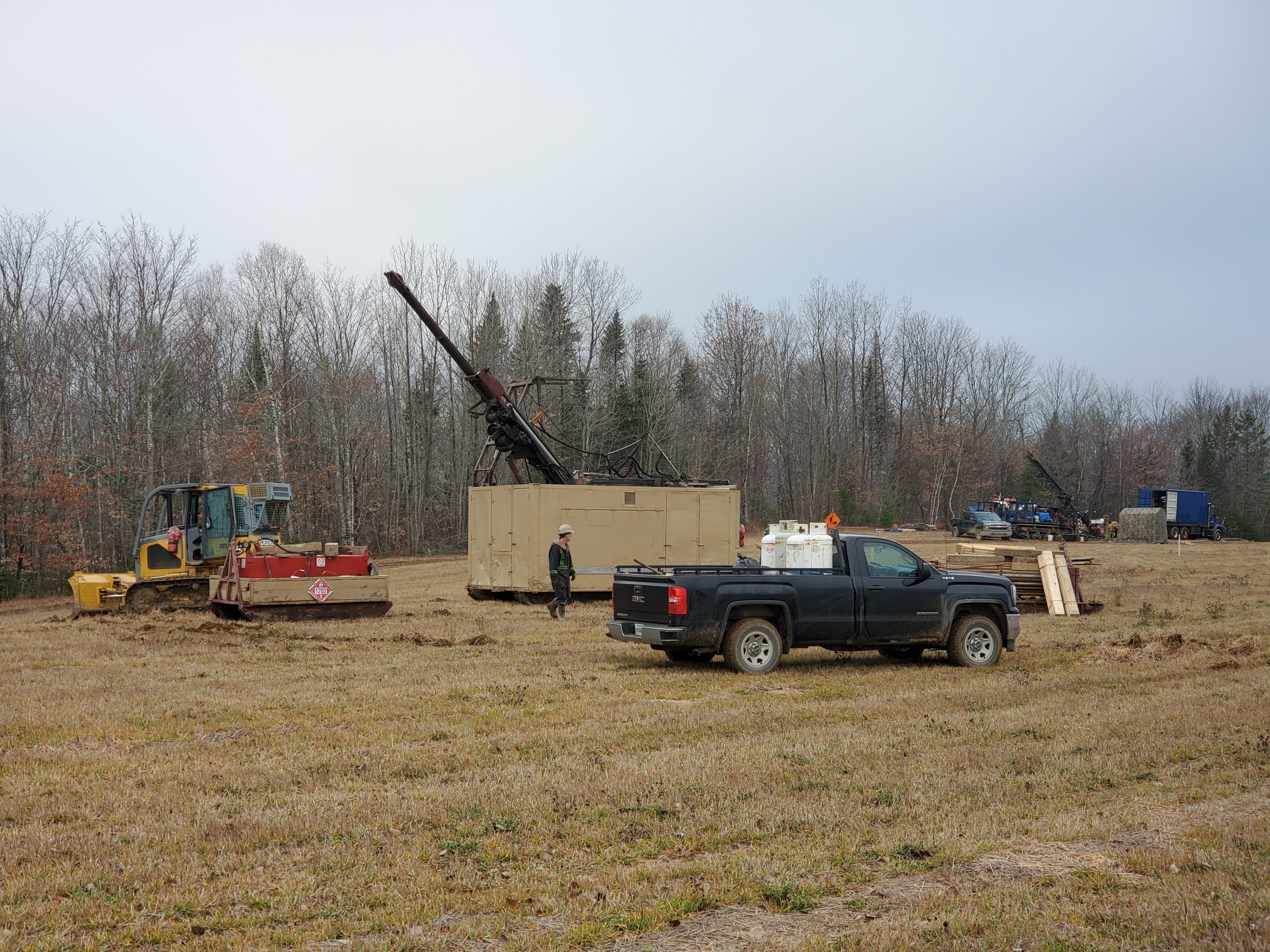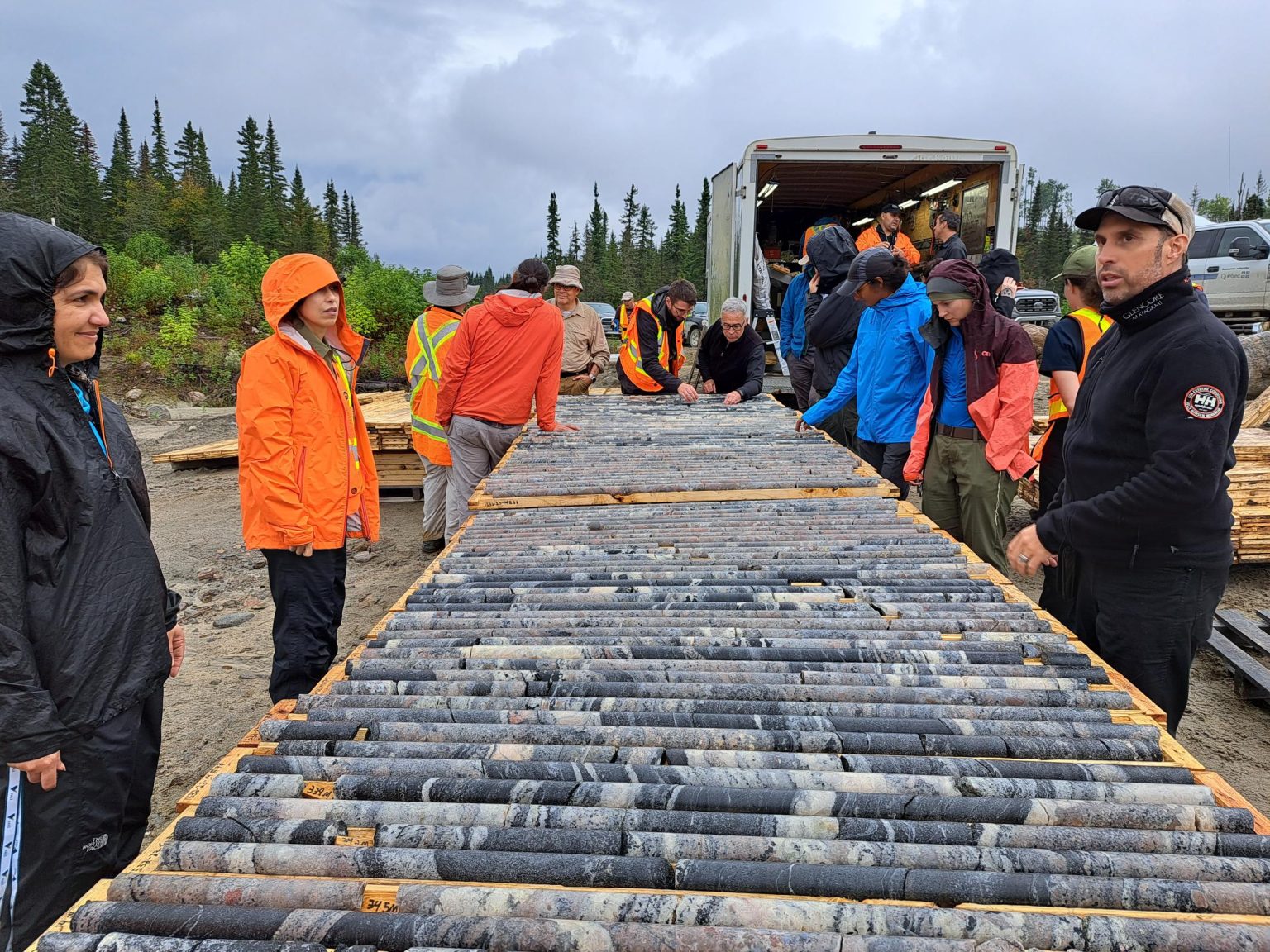Stornoway’s Renard diamond mine reaches full production

The Stornoway mine site in September 2017. CREDIT: STORNOWAY DIAMOND
Stornoway’s Renard diamond mine, 360 km north of Chibougamau, represents a lot of firsts.
Renard is the first diamond mine in Quebec and the first diamond mine in Canada to be 100% owned and developed by a junior. The complex $946-million financing that the company negotiated in 2014 to build the mine was the largest ever raised for a publicly listed diamond company. Not only that, but the company did it at a time when mine financing was incredibly difficult to get.
Renard is also the first diamond mine in Canada to enjoy all-weather road access – the first tangible beneficiary of Quebec’s Plan Nord – an ambitious infrastructure program meant to open up the northern reaches of the province to resource development.
The open pit and underground mine – which is forecast to produce an average of 1.8 million carats annually over its 14-year mine life – was completed under budget ($775 million compared with a budgeted $811 million) and on schedule. By all accounts, the build and ramp up has gone well: Renard achieved commercial production on Jan. 1 and full nameplate production of 6,000 t/d at the end of June.
“The orebody’s performing well, the rock is all in the right place, and we’re getting a better mix of geological units than we expected,” says president and CEO Matt Manson, outlining Renard’s performance so far.
“The grade is reconciling fine, costs are in line – we did $54 a tonne in the last quarter and we’ve been consistently achieving our budgeted costs on a per tonne basis. And the sales are doing well also – we’ve done about seven tender sales now and we’ve seen the market warm to the goods.”
Now that all the big hurdles of financing, constructing and bringing online a remote mine are out of the way, Stornoway is facing more run-of-the-mill challenges – literally.
“The challenge that we’ve got is a quality issue in our process plant where we’ve got a higher level of diamond breakage than we’re comfortable with,” Manson said in an interview in September.
That breakage level of 20-25%, is about 10% higher than expected – and it’s affecting the prices Stornoway is receiving for Renard diamonds.
“Originally our resource calculations estimated internal breakage of 10-15% because it’s normal to break diamonds in a diamond process plant,” explained Patrick Godin, Stornoway’s chief operating officer. “It’s the percentage we have compared to what we expected that is reducing the value of our sales.”
The high levels of breakage can be attributed to the physical impact of waste – mainly hard, gnessic granite – against diamonds and the steel linings of the crushers. The Renard orebodies have a lot waste, with high levels of internal dilution that can vary up to 50-70%.
Spectral sorting
In August, the company unveiled a plan to better manage the breakage. In yet another first, the company will add a TOMRA spectral sorting circuit to the plant to reduce the high levels of waste rock in the crushers.
Spectral sorting is not new to mining, but Renard will be the first diamond mine to incorporate it.
“Others are trying it – when we were running our trials in Germany with the supplier, there was another well-known diamond miner at the same time doing a similar trial so we’re certainly not alone in this,” Manson said.
Testing has shown that the technology – which sorts the waste rock from the kimberlite based on spectral response – is successful in segregating the olivine-rich kimberlite from feldspar and quartz-rich waste rock.
“Ore sorting for us is a) an obvious thing to look at given the amount of waste in the ore and b) lucky for us, there’s a very strong spectral contrast between most of the waste and the kimberlite and the modern technologies that are out there allow us to do this.”
The $22-million new spectral sorting circuit will have a capacity of 7,000 t/d – the maximum allowed under Renard’s current permits. It will be installed after the primary jaw crusher and before the secondary cone crusher to extract waste in the +30mm-200mm size range. The circuit is expected to be commissioned in the first quarter of 2018. Godin says it should remove about 35-40% of the waste.
The circuit, which can be expanded in the future, also provides the added benefit of increasing processing capacity by removing a large volume of material from the front of the plant and opening up the back of the plant. It will add about $1 per tonne to operating costs.
Infrastructure and site development
For a remote site like Renard, key infrastructure is make-orbreak.
Under Plan Nord, a 240-km road extension linking Renard to Chibougamau was built – the first 140 km by the province’s Ministry of Transportation and the last 100 km built by Stornoway.
“We wouldn’t have been able to build this mine without a road,” Manson acknowledged at the official opening of Renard last October.
The road opened up the opportunity for another first at the mine – it has the first and only processing plant in Canada to be powered by a liquefied natural gas (LNG) plant.
Road access made the option less expensive than diesel or grid power.
While open-pit mining has been ongoing at the side-by-side Renard 2 and 3 kimberlites since 2015 (and at Renard 65 since 2014), the company has also been getting ready for underground mining with ramp development starting in 2015.
As of next year, the principal source of ore to the plant will be underground mining at Renard 2, which will be mined for 10 years.
(Probable reserves at the mine are hosted in four kimberlites, including Renard 4, totalling 22.3 million carats contained in 33.42 million tonnes grading 66.6 carats per hundred tonnes.)
Development of the underground mine has progressed on schedule: by mid-year, it had reached 2,746 metres, slightly ahead of plan. Work in the second quarter focused on lateral development in kimberlite at the 160-metre level, development of the production drifts at the 270- and 290-metre levels, and on the fresh air raise.
Stornoway has had one wrinkle with regards to its processed kimberlite management plan, which originally called for all the processed kimberlite to be dry-stacked.
“We are generating more fines than expected and we did tests on the centrifuge (used to dewater the fines) at the detail engineering stage and it wasn’t performing as expected,” Godin told CMJ. “It was not possible to achieve the geotechnical characteristics required to dry-stack the material.”
Instead, the company will dry-stack 60-65% of the processed material and store the rest as a slurry inside a containment constructed from the dry-stacked material. Godin says the plan has the same footprint as the original plan, and that modified permit authorizations were received in July.
Diamond sales
Stornoway has had seven diamond tenders so far, starting last November, but only one has achieved an overall price within the company’s guidance of US$100-132 per carat. In the first quarter of the year, the average price was US$81 per carat, increasing to US$87 per carat in the second quarter. The company received $101.50 per carat in a July sale for what Manson says what a “standard mix” of Renard stones. (A March 2016 updated mine plan estimated average prices at US$155 per carat.)
Two issues have negatively affected the pricing: breakage, which has reduced the size and quality of the Renard stones, and a demonetization event in India last November that depressed the price of small stones. (Much of the market for small stones is in India and the demonetization – which suddenly invalidated the 500-rupee and 1,000-rupee notes that made up over 80% of the currency in circulation – caused a liquidity crunch for Indian diamantaires.)
In addition, new production is always subject to a discount at first – until buyers get to know the product and get comfortable with the quality. Manson says the real price of Renard goods – accounting for variability between parcels in size, quality etc. – has actually risen by 19% since the first sale. A small portion of the rise, between 3-6%, has been an increase in market prices for rough, but most of the increase reflects buyers’ comfort with the stones. So far, the company has sold around 1 million carats in all, including 350,159 carats in the second quarter, which brought in revenues of $42.6 million.
“We’ve had very good reports on yield, the amount of polished you can get out of the rough,” Manson says.
“There’s no skins or coats on our goods,” he adds. “They’re very easy to assess when you pick them up and look at them and they’re very predictable when you polish them.”
In addition, the goods don’t break on a polishing wheel, and the colour of brown Renard diamonds in particular have shown to improve on polishing.
Peak diamond
Noting that three new mines have started up in the past year – Renard, Gahcho Kué and Firestone Diamonds’ Liqhobong in Lesotho – Manson says that the diamond market is currently fully supplied.
“I think we’re at peak production right now,” Manson says.
“There’s maybe one new project to come in Angola with Alrosa and Endiama, but that’s it – and looming on the horizon is the likely closure of the biggest producer of diamonds in the world, which is Argyle, around 2021.”
While the diamond market has had its challenges, Manson remains an optimist about the fundamentals of the diamond market.
“We’re miners – we can’t really afford to get too wrapped up in the short-term week-by-week or month-by-month trends of the diamond market,” he says. “We’re building billion-dollar projects with 15, 20-year outlooks, so we try to remain disciplined and look at the diamond market from a 10, 15, 20-year outlook.”
Manson adds: “And if you do that, it looks fantastic because where is new diamond supply going to come from? That fundamental optimism is the optimism that underlies everything we’ve done at Stornoway.”





Comments